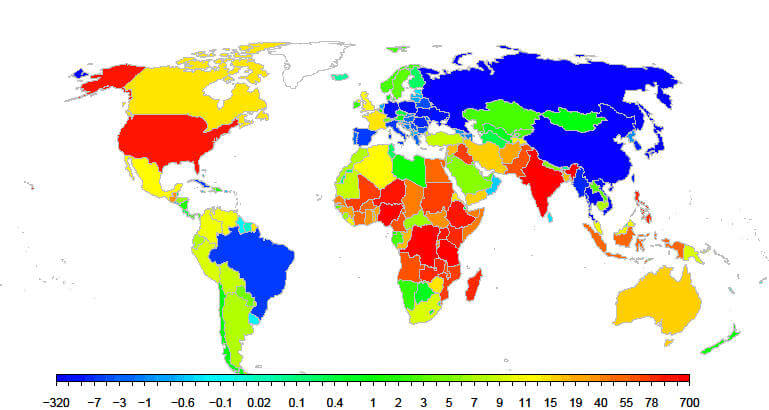Experts from the University of Washington believe that the increase in the human population will not stop, despite the negative growth in some countries

A new statistical analysis shows that the world's population may reach almost 11 billion people by the end of the century, according to a UN report published on June 13. This is about 800 million inhabitants or about 8 percent more than the previous forecast that was published about two years ago and predicted 10.1 billion people by the end of the century.
The source of the additional growth is a re-evaluation of the fertility rate in Africa which is not decreasing at the rate expected by UN researchers so far. "The decline in fertility in Africa has slowed or been halted to a greater extent than we previously predicted, and as a result the African population will increase," said Adrian, a professor of statistics and sociology at the University of Washington.
The population of Africa currently stands at about 1.1 billion people and is expected to reach 4.2 billion by the end of the century, an almost fourfold jump.
The new UN estimates make use of statistical methods developed by Rafferty and his colleagues at the Center for Statistics and Social Sciences at the University of Washington. Methods developed by the group to improve fertility forecasting, combined with updated data collected by the United Nations, have been used to predict the long-term consequences of changing fertility in Africa since the previous population estimate made two years ago. Also, highly accurate statistical tools are used to predict the life expectancy of women and men during the 21st century.
"In other regions of the world, no major population changes are expected compared to the previous forecast. Europe may record a small decline because fertility continues to be less than the rate at which the population remains stable. Conversely, countries in other regions around the world may see small increases in population size due to longer life expectancy," said Rafferty.
"There is no end in sight to the growth of the world's population, he added, but the issue has disappeared from our agenda in favor of other urgent issues, including poverty and climate even though both are closely related to the size of the human population."
"These are new findings that show that we need to renew the policy to prevent population explosion, for example accessibility to increase family planning and the expansion of education for girls, to address rapid population growth in Africa," said Rafferty.
The UN provides high and low versions of its projections, assuming that women have on average half as many children as the best estimate. This leaves a great uncertainty, from 7 billion to almost 17 billion people at the end of this century. In contrast, the research group at the University of Washington developed probabilities of future population levels combined with the best predictions. "Our probability intervals are much tighter, ranging from 9 billion to 13 billion people in 2100" concludes Rafferty.
The world's population reached 7 billion in 2011. It crossed the previous mark of 6 billion in 1999.
to the notice of the researchers

4 תגובות
I didn't like the article - I think the UN did a bad statistical job here in presenting the data:
If I understand correctly, the discussion is which country will grow more in absolute number of people, not in percentages of its existing population.
If this is indeed the case, then it is a very biased figure - since it is clear from the outset that large countries (China, India, USA, Brazil, Nigeria, etc.) will be the ones where the number of residents will change significantly.
In fact, at the same time as measuring population growth, the graph shows the typical size of countries: if we do not change anything in terms of natural reproduction, but divide all African countries into 100 countries, then the whole of Africa will be colored green, indicating the absence of growth, even though nothing has actually changed.
Although it makes some sense to present the absolute number since one wants to show a global trend, but then it does not make sense to present what is happening in each country since as mentioned, this implicitly measures the size of the countries.
If you want to show global trends, according to which the majority of growth is in third world countries, while in the western world, there is a decrease in population, it would be better to divide the world into large areas, of say half a billion people, homogeneous from a socioeconomic point of view, and then, when all areas are more or less the same in size, there Value to talk about growth in absolute number.
If, on the other hand, you want to present what is happening in each country, the rate of growth in percentages is much more relevant, since,
The US can handle a population increase of one million people almost without feeling it, while for Liechtenstein this change will turn the country into something completely different.
It does not seem to me that the population of Africa will increase significantly, because Africans do not know how to grow food. Overpopulation in Africa will cause mass starvation and as a result migration out of Africa, or the famine will cause growth to stop.
And the side effects are: the extinction of the species, the pollution of the earth, the warming of the earth, the exploitation of natural resources, poverty, and the outbreak of epidemics.
An outbreak of a new epidemic, could kill half of the inhabitants on the planet.